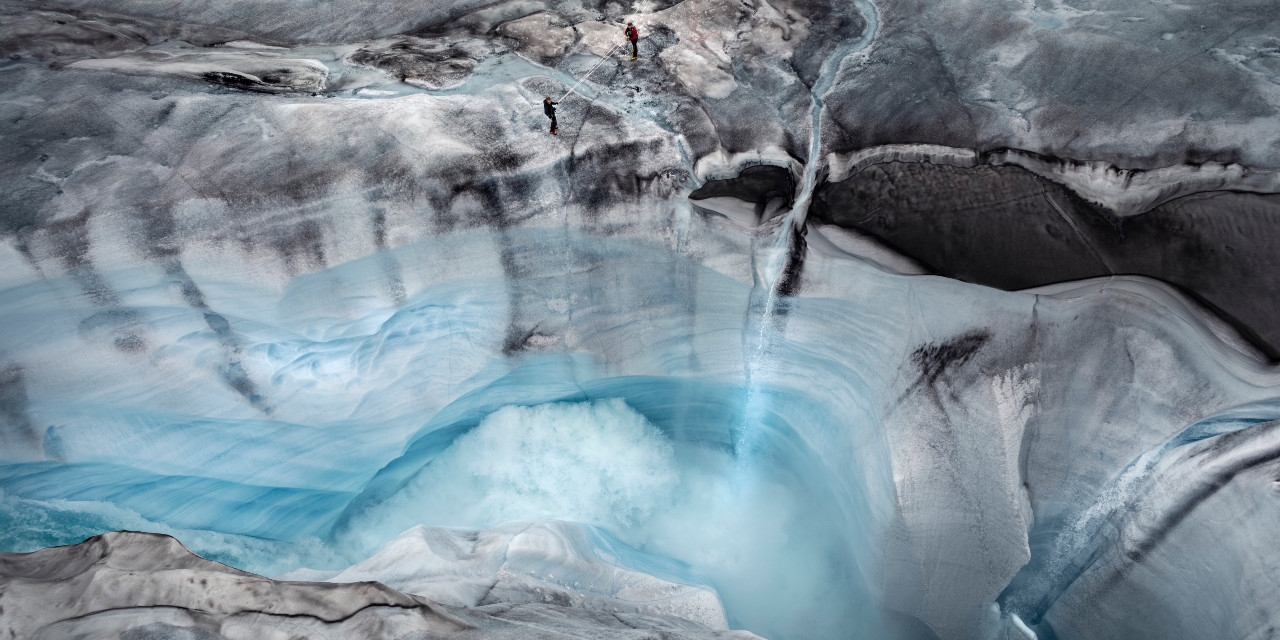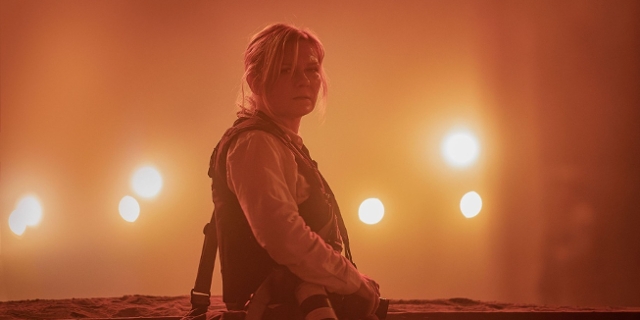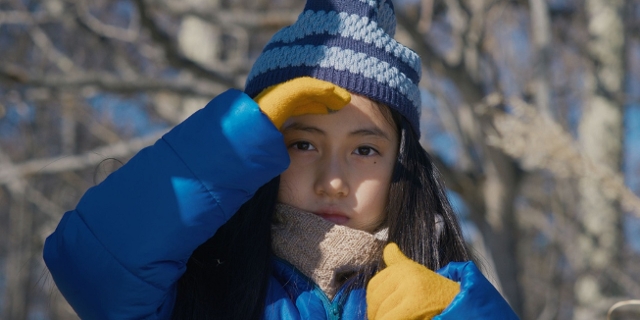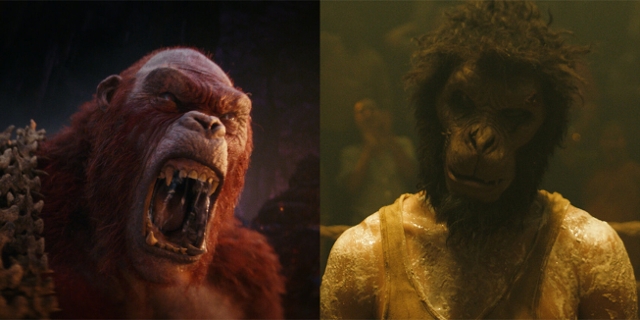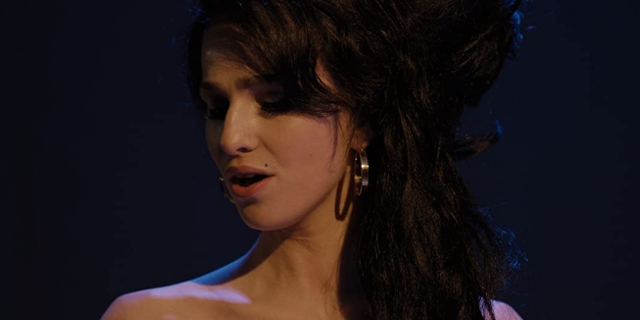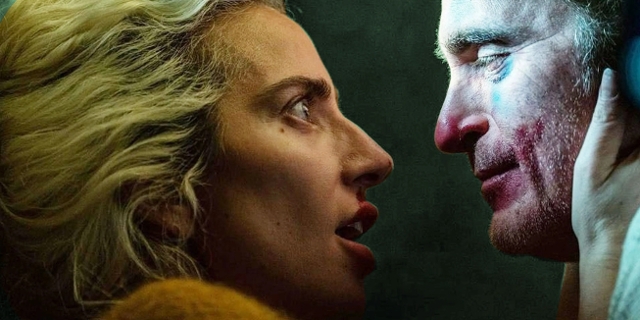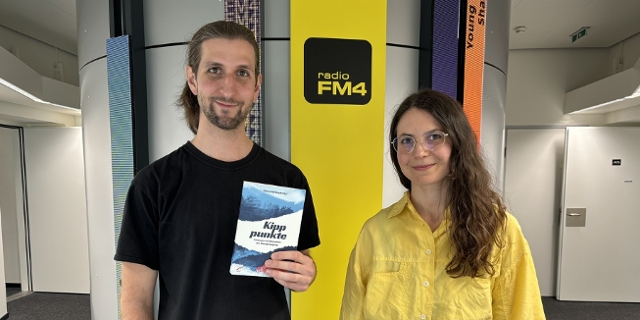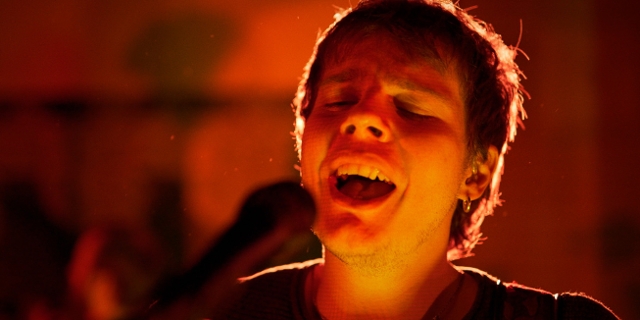Into the Ice: a vital climate thriller
Von Chris Cummins
“The Greenland inland ice harbours a secret. You can see our future in it,” narrates director Lars Henrik Ostenfeld as drone footage shows sapphire-blue rivers of meltwater disappear into a ‘moulin’ – a melted hole burrowing deep into icesheet.
We overuse the label “must-see” in film reviews, but given the importance of that secret, this beautiful, entertaining but ultimately frightening documentary is a film that we ignore at our peril.
Satellite data and computer modelling about Greenland’s melting are important. But, explain the scientists who star in this documentary, we can only find out the real dynamics and pace of arctic melt through arduous field work. That means expeditions on skis and sleds laid with drills, weighing scales or even ropes from which the scientists dangle into these ever transforming and instable moulins.
And it is this adventurous science that make this documentary not just important but also icily thrilling.
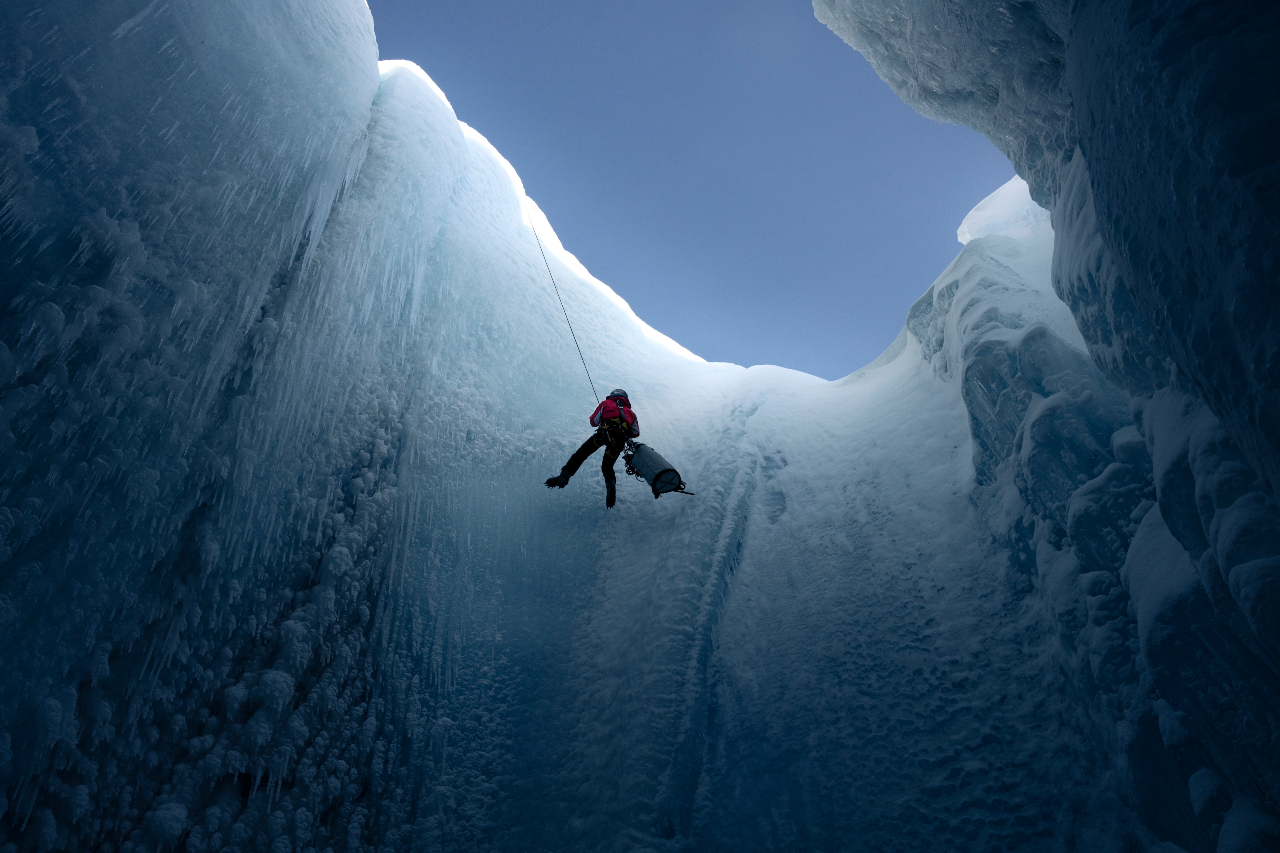
Lars Henrik Ostenfeld
“What’s happening inside the inland ice is very important because that’s actually give us half of the sea level rises around the world and we hardly know anything about it yet,” Lars Henrik Ostenfeld told me in an FM4 interview. “So it’s very important to go on the ice and make measurements and try to figure out how fast is the ice melting and the how fast and how much will sea level rise in the future.”
A Film That Celebrates Science
This is a film that takes science seriously. It also pays us, its audience, the compliment of trusting we will understand and absorb what is being said. There are no patronising metaphors or dumbed down simplifications. Instead, Lars lets us watch the scientists go about their work and explain the significance of their data in blunt terms.
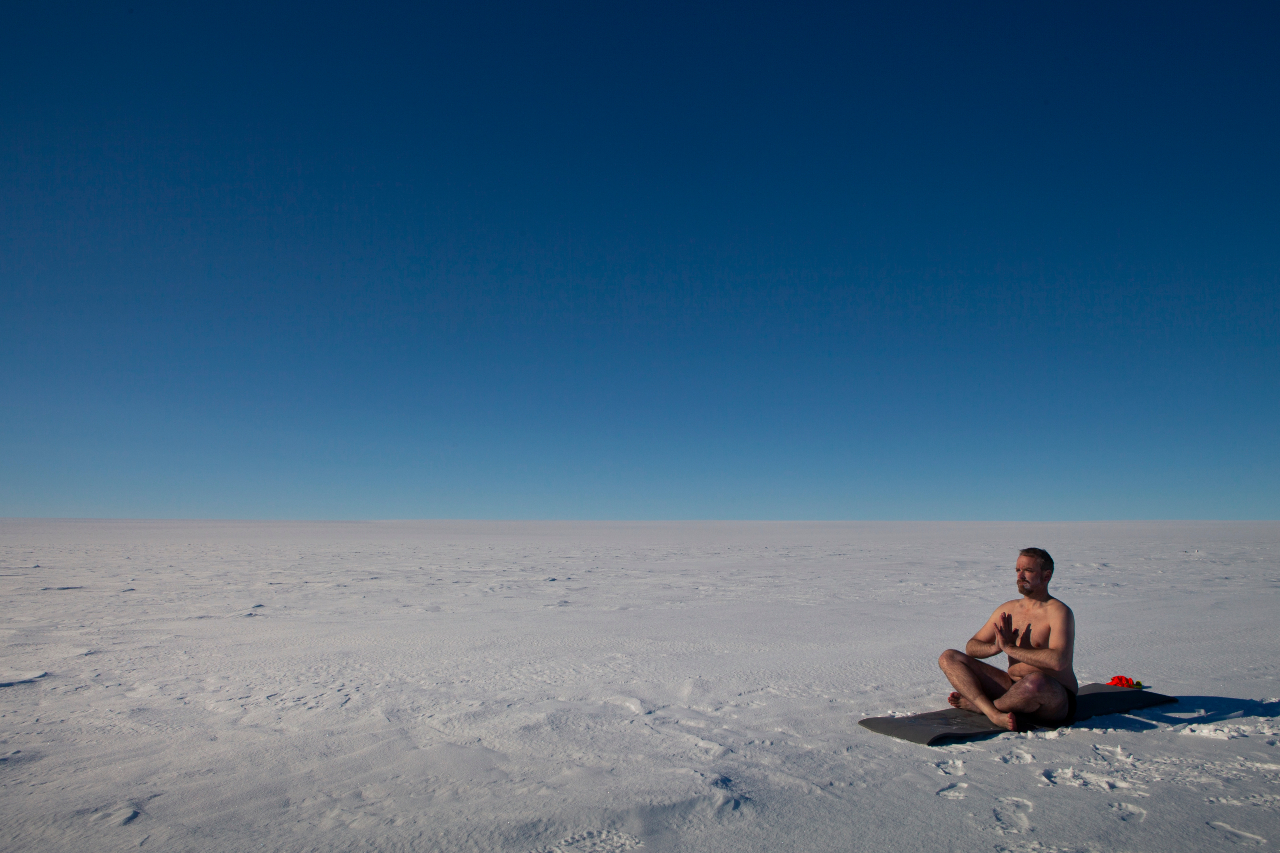
Lars Henrik Ostenfeld
Absorbing documentaries rely on characterization to help carry the message to our hearts as well as our brains. Lars seems to have lucked out in this respect. He told me that “most people working on the ice are very special”, and the scientists he predominately follows are engaging characters. Lars captures their emotionality and vulnerability. They are very human.
FM4 Klimanews Star Jason
First of all we get to know Jason Box, for example, who starred in the Fm4 Klimanews video series.
Jason is a family man, a soulful lover of nature and a man so involved in his often lonely work that he is moved to tears when the measuring equipment he digs out of the ice has survived to give him useful data.
The portraits of the scientists are touchingly intimate and feel very genuine. That is probably down to the intense relationship between Lars and his subjects. The filmmaker joins Jason and a fellow scientist on a 12-day expedition on the icesheet where storms and crevices mean a genuine risk of death. Lars is open about his inexperience as an outdoors man. However it was, he told me, vital he took on this strenuous mission: “Jason told me this was the first time any filmmakers asked him to join him on the ice for 12 days on the ice. I want people to feel it. I want people to see it.”
Real Jeopardy
So we see him hunkering down as a sudden storm threatens to blow their tent away. The expedition team must quickly built a protective wall out of blocks of ice. There is a genuine sense of real jeopardy here:
“I was stuck in in for two days,” remembers Lars. “We got the message that a big storm was coming and we started building this snow wall to protect us. So I started filming when they start making the bricks of snow. And then I realised, ‘man, I also have to survive’ so I put down the camera and I started helping them to building the wall. But then it was so beautiful at the same time, so I picked up the camera again and I start filming. And then I’d put down the camera and start helping them again. Actually that scene explains a lot how it was to be there with them all the time.”
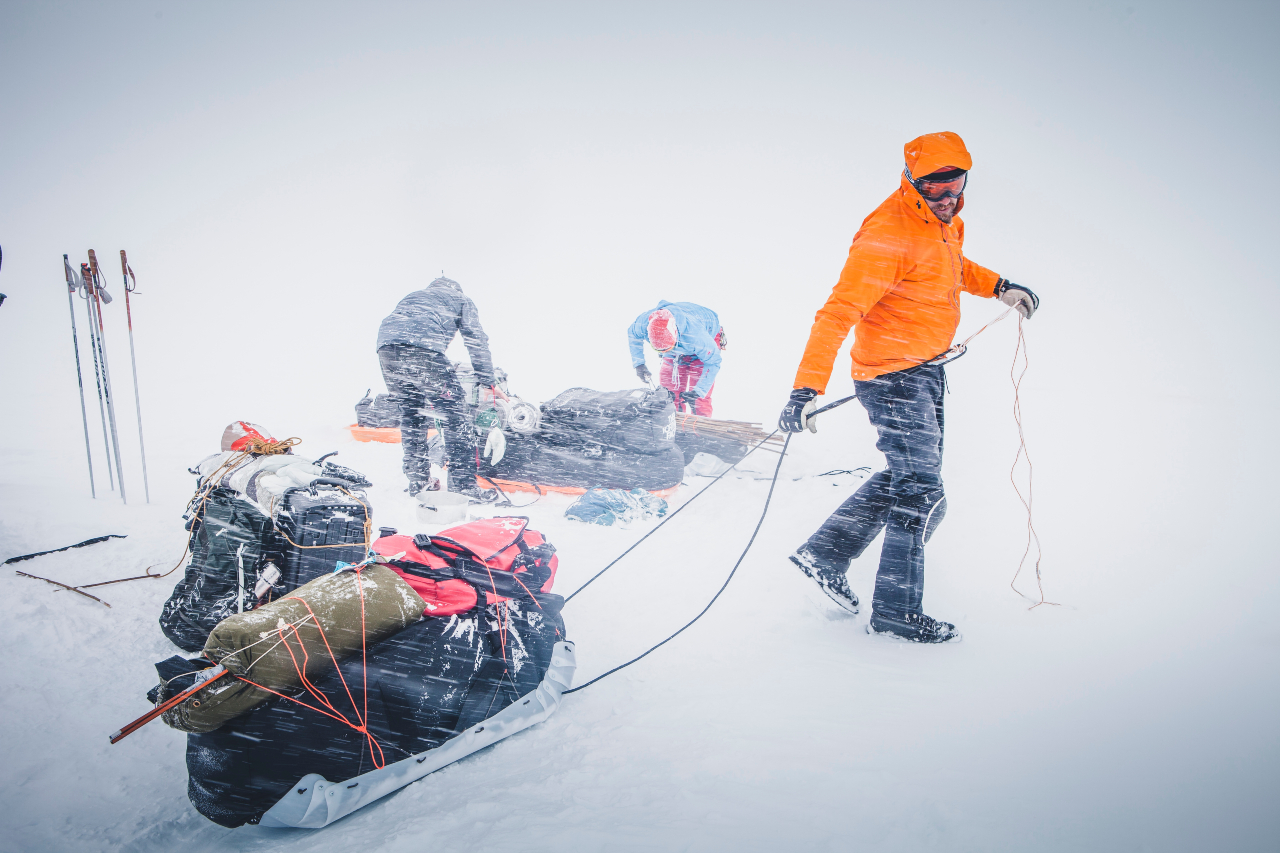
Lars Henrik Ostenfeld
An event later in the documentary shows these dangers are real, the scientists can lose their lives while conducting their research and, with families at home, are intensely aware of those dangers. But, as Jason Box explains, they feel they can’t afford not take those risks because their research could inform decisions that mean we either act to save the world or we do not. If that sounds like hyperbole, believe me, it is not.
Indiana Jones of the Ice
Alun Hubbard, another glaciologist, clearly embraces the adventure. He’s the one, with the help of a Danish military outdoors survival expert, who abseils 180metres to the bottom of one of these moulins. In these ice-chasms the shifting ice groans eerily and there is a constant danger of a deadly blow from a falling icicle. But they must go down there: if they discover water at the bottom of the moulin it could change everything we know about Arctic ice melt.
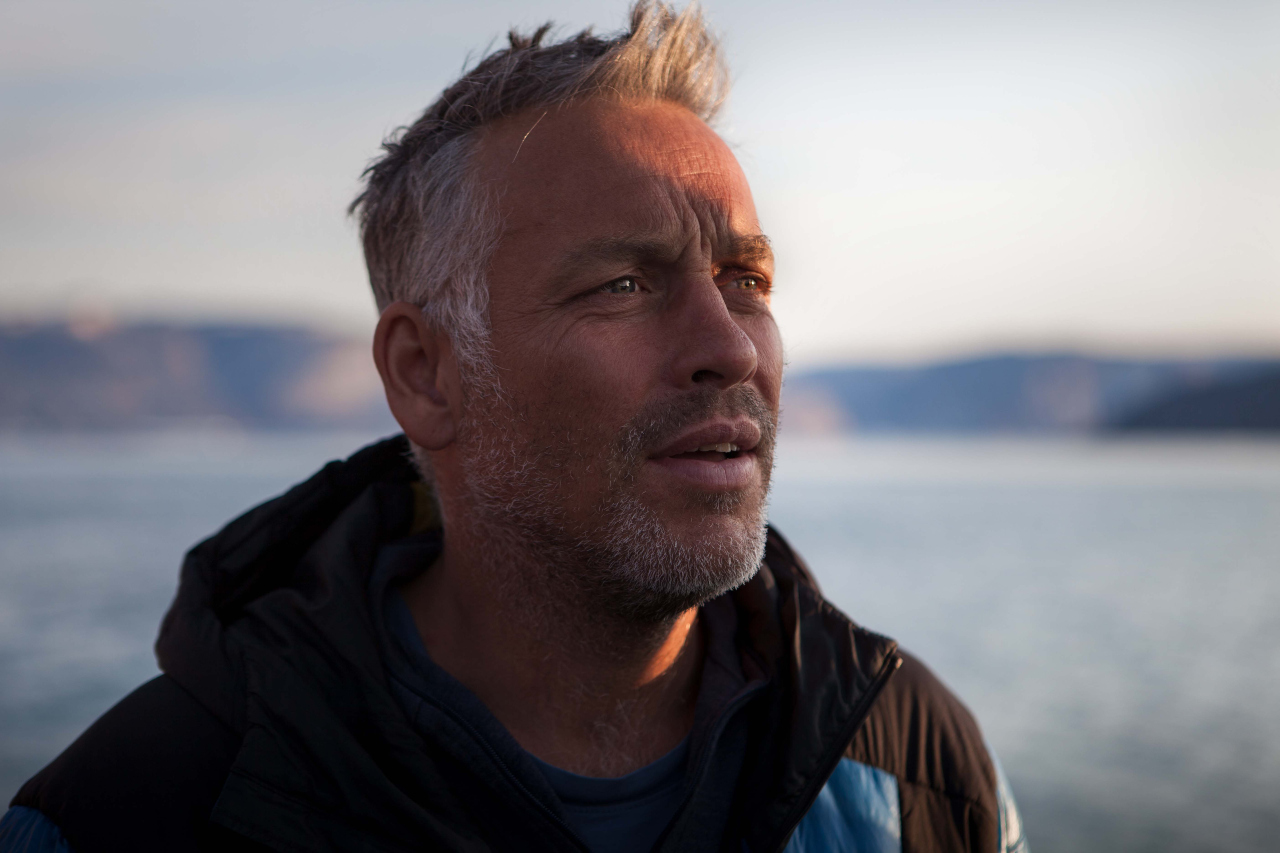
Lars Henrik Ostenfeld
Science has rarely looked so edgy; scientists have rarely looked so sexily daring. If I had watched this as child, I would have wanted to become a scientist.
“When I talk to the foundations who supported the film, I told them that I hope young the young generation will look at these Indiana Jones type of scientists and want to be like them,” Lars told me, “It is an adventure to be a scientist going in the field and do some research.”
„I was totally scared“
To his immense credit Lars follows Alun down, despite being clearly terrified. “I was totally scared, but at the same time I was curiously, I wanted to follow them. I think it is important to follow them with the camera because then we have no discussion about is it true or not true. I wanted to prove and document what they find.”
Hats off, Mr Ostenfeld.
„Burden of Awareness“
In the film, Jason Box speaks of the “burden of awareness” of just how bad the climate crisis is. Knowing what he knows about likely sea-rise, he finds himself often unable to sleep at night. I wondered how making the film had affected Lars?
"When I just finished the film, I had too much work to make a good story out of it to think about that too much. But now it’s a year since I finished the film and like Jason, I also have a little burden of awareness or knowledge because I saw these things with my own eyes. And I also have the feeling that the the politicians and people are not listening.”
If enough people watch this stunning documentary, maybe that will change.
Into The Ice (Polyfilm) is in Austrian cinemas as of 30.9.2022.
There is a premier at the Filmhaus in Vienna on Tuesday 27th September, including a Q&A with the director Lars Henrik Ostenfeld and Karl Schellmann, a climate and energy speaker at WWF Österreich. The WWF supported the making on Into the Ice.
Publiziert am 26.09.2022







